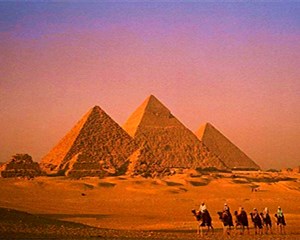The English traveller in Egypt is generally willing to getaway from Alexandria as soon as he can, and that for sanitary reasons. Cairo is distant some hundred miles, and the route thither lies either along the famous canal made by order of Mehemet Ali in 1819-20, or along the railway, which has brought the city of Saladin within a few hours of the coast.

In the neighbourhood of the Pyramids are the ruins of Memphis, the ancient capital of Lower Egypt, and the residence of the Pharaohs at the time of the exodus of the Jews. "For miles," says Dean Stanley, "you walk through layers of bones and skulls and mummy swathings, extending from the sand, and deep down in shaft-like mummy-pits; and among these mummy-pits are vast galleries filled with mummies of ibises, in red jars, which are being gradually despoiled. Lastly, there are long galleries, only recently discovered, hewn in the rock, and opening from time to time—say every fifty yards—into high arched vaults, under each of which stands the most magnificent black marble sarcophagus that can be conceived—a chamber rather than a coffin—smooth, and sculptured within and without; grander by far than even the granite sarcophagi of the Theban kings—how much grander than any human sepulchres anywhere else; and all for the successive corpses of the bull Apis!"












